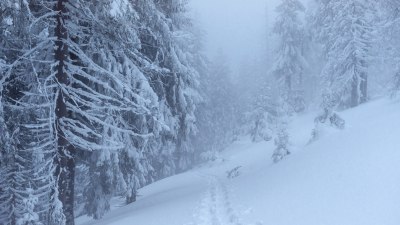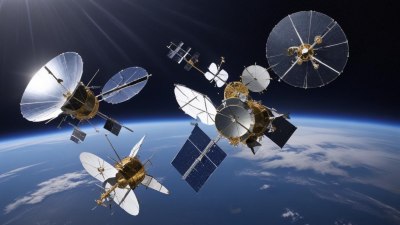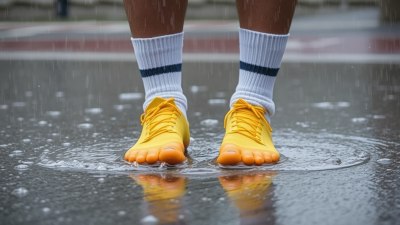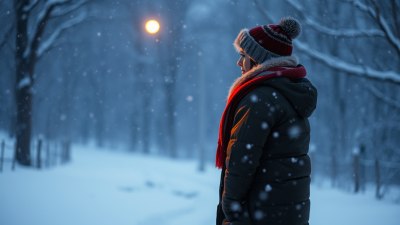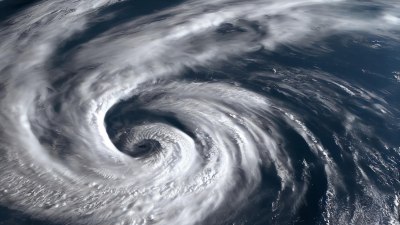Why The Grocery Store Parking Lot Always Has Its Own Weather System
Explore the unique weather patterns in grocery store parking lots and their fascinating effects.
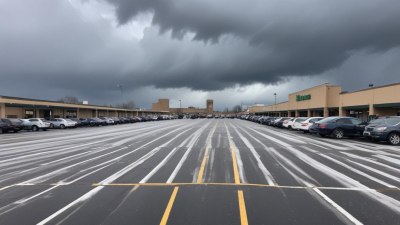
This image was created with the assistance of Freepik
Every time you pull into a grocery store parking lot, you might notice something intriguing—it's as if these expansive areas have their own unique weather system. This seemingly odd phenomenon can be attributed to several factors ranging from environmental conditions to the structural design of the lots themselves. In this article, we’ll delve into the various reasons for this strange occurrence, exploring how different elements come together to create microclimates that differ significantly from surrounding areas.
The Basics of Microclimates
Before we dive into grocery store parking lots specifically, it’s essential to understand what a microclimate is. A microclimate is a small, localized area within a larger climate zone, where the weather conditions can differ significantly from the nearby surroundings. This can be due to factors such as topography, vegetation, water bodies, and human activities. Groceries store parking lots are prime examples of microclimates since they often feature vast expanses of asphalt, which can trap heat, as well as various structures that can affect sunlight exposure.
Asphalt's Role in Temperature Regulation
One of the primary features of grocery store parking lots is the large areas of asphalt. Asphalt is well-known for its heat-absorbing properties. During the day, it absorbs sunlight and converts it into heat, which can raise the local temperature by several degrees compared to the surrounding areas, which typically feature grass, trees, and other vegetated regions. This temperature difference can create a warm pocket of air, drastically altering the microclimate within the parking lot itself.
Wind Patterns and Their Effects
The design of grocery store parking lots also plays a significant role in the weather conditions you might experience while shopping. Parking lots are usually less sheltered than surrounding areas, which can lead to unique wind patterns. These lots may create channels that funnel wind through the space, leading to gusty conditions that may feel different than the light breeze outside. Additionally, the wind's interaction with parked cars and building structures can create turbulence, leading to the perception of a distinct weather system.
Plant Life and Water Features
While many grocery store parking lots boast minimal landscaping, some have a few trees or planters that can influence their weather. Vegetation can contribute to cooling effects through a process known as evapotranspiration. This process occurs when plants release moisture into the air, leading to cooler localized temperatures. Even a few trees can create enough of a temperature differential to make a noticeable impact, especially during hot summer months.
Roof Overhangs and Building Design
Many grocery stores are built with large overhangs designed to provide shade for patrons as they enter and exit. These structures can further impact the microclimate in the parking lot by blocking direct sunlight and creating shaded areas that may remain cooler than surrounding areas. Additionally, they may funnel air in a specific direction, promoting airflow that can affect local weather conditions.
Seasonal Changes and Their Impact
During seasons of extreme weather, like summer heatwaves or winter cold snaps, grocery store parking lots can exhibit even more defined weather patterns. In summer, the heat absorbed by asphalt can lead to increased humidity levels as the concrete and tarmac release moisture back into the air during the hotter parts of the day. Conversely, in winter, snow or ice can melt quicker in these heat-trapped areas, creating a stark contrast with the surrounding snow-covered streets.
Consumer Behavior and Its Influence
The behavior of shoppers also contributes to the unique weather system of grocery store parking lots. For instance, cars generate heat; the concentration of vehicles can raise temperatures within the parking lot, especially in peak shopping hours. Additionally, the accumulation of body heat from pedestrians can subtly elevate the temperature. After all, shoppers often spend more time in the parking lot during peak times, leading to a temporary microclimate that feels different compared to quieter periods.
Rain and Runoff Dynamics
Rain can equally affect the conditions found within grocery store parking lots. When rain falls, the asphalt is unable to absorb the moisture, leading to surface runoff. If a large rainfall event occurs, this runoff creates puddles which can evaporate on warmer days, adding humidity levels in the microclimate. Furthermore, the design of the lot can influence how water drains away, with poorly designed areas leading to localized flooding during storms, further shifting weather conditions in those lots.
Heat Islands and Urban Effects
The phenomenon of urban heat islands is further exemplified in grocery store parking lots. Urban areas naturally retain heat due to the extensive use of concrete and asphalt. Grocery store parking lots often amplify this effect due to their sheer size and design, leading to higher-than-average temperatures, especially in urban settings. The combination of man-made structures and limited vegetation can create localized zones that experience considerable temperature variations, making your trip to the grocery store feel like a journey into a distinct climate.
Awareness and Adaptation
Understanding the unique weather dynamics at grocery store parking lots provides insight into broader environmental effects such as climate change and urban planning. As these lots present specific weather systems, consideration should be given to sustainable practices like improving green spaces, implementing better drainage systems, and creating shaded areas to mitigate extreme heat. Moreover, these adaptations can improve the overall experience for shoppers while contributing positively to the local climate and environment.
The grocery store parking lot does indeed seem to have its own weather system, influenced by many interconnecting factors including asphalt materials, landscaping designs, seasonal impacts, and consumer behavior. As you navigate through the lot on your next grocery run, remember the unique microclimate at play, and consider how these environmental dynamics enhance the overall shopping experience. By gaining awareness of these phenomena, we can appreciate how our surroundings contribute not only to our experience but also to the larger ecology of urban life.


